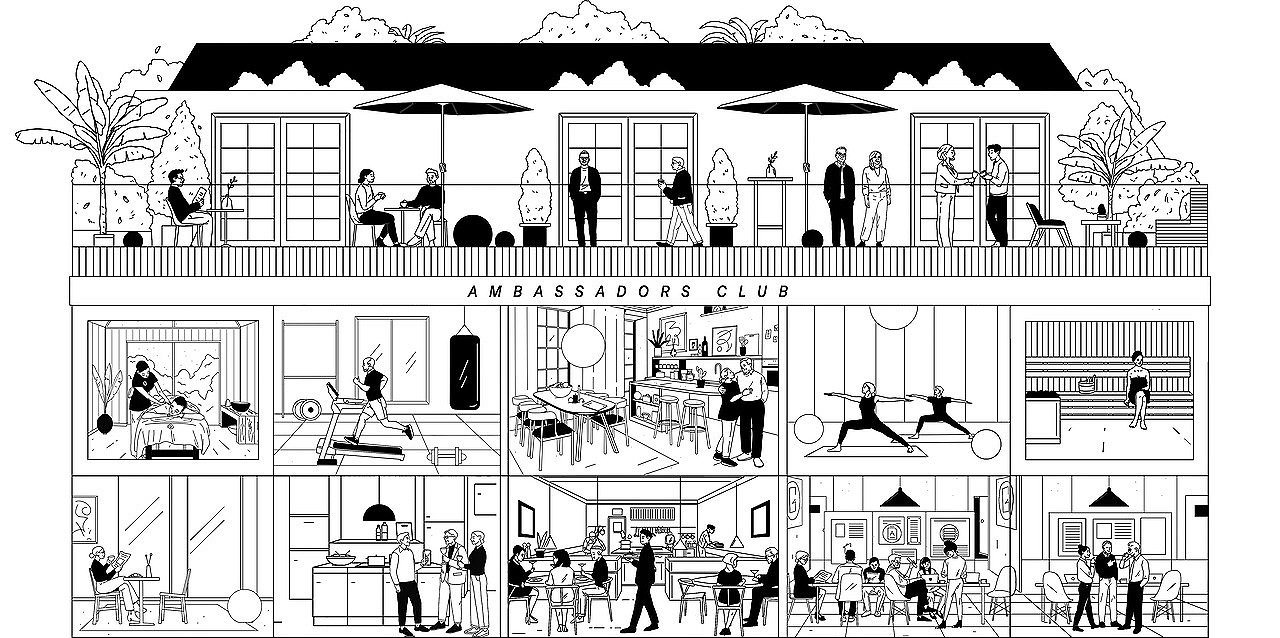Six interesting co-spaces building social capital
Following on from my previous post, I thought I’d share six examples of co-spaces that I believe are doing interesting work building social capital. There are obviously many more.
Each of the six invests in some form of “culture as an amenity”, growing reciprocity and trust amongst their members.
This investment in culture doesn’t just help attract the desired type of tenants. It can de-risk capital by building demand way before the space opens; create a better product by involving prospective members in the design process; generate incremental revenue beyond the confines of the physical; keep clients from going elsewhere; and a lot lot more besides.
What particularly interests me is those that create a cultural amenity that could live beyond the space; that people see value in and would pay for if available elsewhere. This is real value, real glue that sits up there alongside the cultural networks such as Chief, The DO Lectures and Tech GC.
It is something I touched on in a post at the start of COVID. Some of the below offer a glimmer of that.
1. Impact Hub
I was a member of Impact Hub’s Westminster space back in 2013, mentor for their Kings Cross Fellowship for Longer Lives in 2014 and have been tracking them ever since.
One of the original co-working networks, founded in 2005, they focus on building a “community of impact-driven entrepreneurs, creators, innovators and intrapreneurs” and invest in creating a culture that supports them.
They predominantly curate third-party programming that aligns with their focus, but also offer their own, working with foundations, government and NGO’s to develop and fund these.
While I’m not sure how their cultural amenity would succeed beyond the space, they’re definitely one to learn from.
2. Second Home
Founded by Rohan Silva in 2014, Second Home is one I haven’t experienced first hand as yet but is definitely on the list.
With spaces in London, Lisbon and LA there is a clear focus on building a community of creatives and offering cultural programming that backs this up.
Their programming seems to be more curated, as opposed to developed bespoke, so I’m not sure how much it would work beyond the confines of their own space, but they are definitely investing in culture as an amenity in a way that aligns with the community they want to serve, and the space they have developed.
Firmly one to check out.
3. Kolping
So I stumbled across Kolping while wandering around our part of Cologne and was intrigued. Definitely not your usual trendy co-space concept but worth checking out all the same.
They offer affordable central accommodation for trainees and apprentices as they look for a more permanent place to live and settle into their new life.
In addition to space, they offer community events, career guidance, support with job applications, referral to healthcare providers and more besides. A very strong and relevant approach to “culture as amenity”.
Backed by the Catholic church, culturally it will not be for everyone and clearly, based on the reviews, there is work to be done in terms of the amenities on offer, BUT I feel the concept is one that has a lot of potential considering the challenges cities face with affordable housing and helping young people transition into meaningful work, and as a cultural offering it very much aligns with the community they speak to.
4. Huckletree
Another one on the list to check out in person is Huckletree - a network of workspaces in London, Manchester and Dublin.
They position themselves as “innovation ecosystems for the bravest minds and ideas” - not just a space - supporting their community with cultural events and programming such as their Alpha Accelerator, The Hundreds Club, Future Founders Academy, Earth Rise Summit and more.
What particularly intrigues me with Huckletree is the fact that they charge for some of their programming and events - a clear commitment to trying to make their cultural offering stack up beyond the space; and that they put their community principles out there, as, in their own words “like any great community built on shared value and spirit, it takes a village.”
Both are tough to make work and full credit to them for trying. It all aligns from afar. Look forward to finding out more.
5. The Embassies
Now this one is special. I only recently stumbled across The Embassies - “a global hospitality concept that changes the way we perceive and experience later life” - when Jan Garde, Founder & Chair reacted to a post of mine on LinkedIn. I was curious, checked them out and, as we both live in Cologne, caught up for a coffee.
When it comes to investing in culture as an amenity, these guys are seriously interesting. With advisors and shareholders such as Tyler Brûlé, founder of Wallpaper plus the backing of Porsche, you can just imagine what this will be like.
Beyond the concept itself and what they’ve got under the hood, The Embassies is a great example of how you can communicate culture WAY before the doors open, growing an enviable waitlist, getting customer feedback and building investor interest in the concept upfront.
They are also very much thinking of their cultural amenity as a platform - one that can live beyond the confines of The Embassies concept - so very much worth keeping an eye on as they open their doors.
6. Innovation Collective
And last, but certainly not least, Innovation Collective, the US-based ecosystem builder that I have been working with over the past 18 months deserves a mention.
Beyond amazing space (see video below) and a comprehensive programming stack that helps unlock human potential in overlooked communities, it is the fact that they launch their cultural programming in a city two to three years before opening the doors that is worth noting here.
This helps validate demand for the investment in real estate, involves the community in prototyping and developing the space through pop-ups, and means when they open doors on their Innovation Dens, they have 80% occupancy from the get go. It is basically doing the marketing you’d have to do anyway… upfront and smarter. It also means you have cultural programming for the community living beyond the confines of the spaces, continuously bringing the community together to build social capital, and growing membership.
The model is extremely interesting, it works and if you’re a civic leader looking to build your local innovation ecosystem (rather than rely on foreign direct investment which we know has its risk) this is worth checking out.






